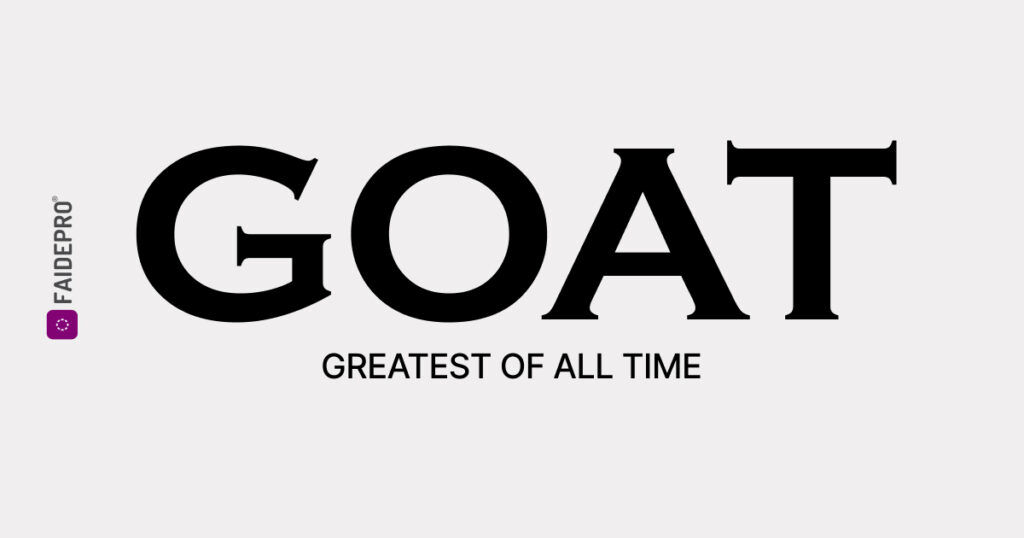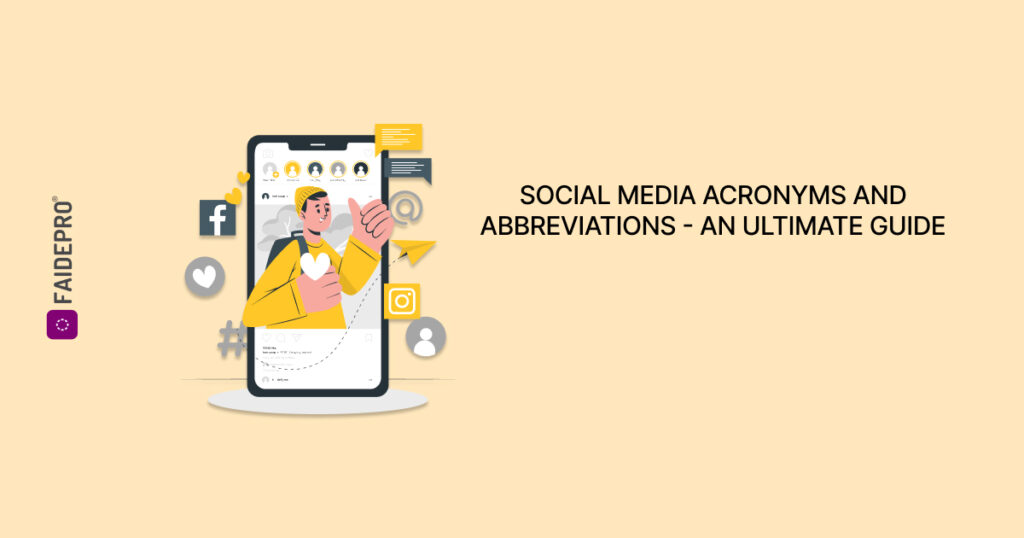Social media has changed the world around us and it is still continuously evolving. Our current world has a major impact on social media on. Social media has made significant changes in our lifestyle. Social media has made us more aware of our environment as well as has given us immense global exposure. Social media has also given us a lot more opportunities for social media marketing as well as online marketing services.
Social media has enabled us to contact the world. We can now easily keep in touch with our friends from any part of the world. Social media marketing companies are also emerging as a new carrier option that provides opportunities to hire as well as avail digital marketing services.
When you go online, chat with friends and join forums, you might have encountered a number of acronyms and abbreviations that make you scratch your head in trying to figure out what they mean. These are called Internet slang, chatspeak, netspeak, cyber slang, or Internet shorthand. They are popularized by thousands of online users. In several cases, they were also the ones that coined many of this Internet shorthand. Actually, the original terms used by text message senders were borne out of necessity, because of the limit in the number of characters in the early versions of mobile phones.
Social media always dictates its own rules. Acronyms and abbreviations, for example, have become a part of the unique language spoken on social media. If you don’t know the terms, you may be in deep trouble. Imagine coming to a foreign country without knowing the language. Exactly! You’ll feel the same on Twitter or Instagram if you happen to have no clue about popular shortenings. Or at a business meeting, where social media acronyms have spread to simplify communication.
What are these acronyms and abbreviations?
Acronyms
An acronym refers to the word, name, or set of letters created as an abbreviation of a longer or a longer phrase or sentence. It is a word formed by abbreviating a phase by combining certain letters of the words in a particular phrase that often is the first initial of each into a single term. Some of the common examples of acronyms include NASA (an acronym for National aeronautics and space administration) and FOMO (fear of missing out).
An acronym is technically a spell out of another word. This is a good point of reference as it helps to distinguish between abbreviations and acronyms. The other significant way to differentiate between them is that acronyms don’t just shorten words, they often simply a long organizational name, idea, or scientific data.
Some acronyms also create a new word that can be commonly used, and it may happen that we forget the actual longer word or phrase. For example: – if you go for a self-contained underwater breathing apparatus or SCUBA diving, we say.
Abbreviations
The abbreviation refers to the words that are the most widely used terms for a shortened or contracted form of a word or a phrase. It can be a single word that is typically formed using the first letters or the letters of the word, the first letter and the last letter can also be used as an abbreviation of a word.
There are millions of common abbreviations used every day. Let’s take a look at some of the popular ones we see and/or use almost daily.
- When you write your address, you likely write “St.” or “Ave.” instead of “Street” or “Avenue”.
- When you record the date, you likely abbreviate both the days of the week (Mon., Tues., Wed., Thurs., Fri., Sat., and Sun.) and the months of the year (Jan., Feb., Aug., Sept., Oct., Nov., Dec.).
- Often, we use the abbreviation “Ex.” for the word “example”.
- Measurements are commonly reduced to abbreviations such as “cm” for “centimetres” or “in.” for “inch”.
- How about “vs.”? That’s another popular abbreviation, shortened from the word “versus”.
Tightening “December” to “Dec.” is an abbreviation because “Dec. “is simply a written shorthand for the full word. It’s not an acronym since “Dec.” isn’t said as a word.
You may have wondered why some abbreviations, like those for ounce (oz) and pound (lb), use letters that aren’t part of the original word. In these cases, the abbreviations are based on older forms of the word.
Why do social media involve acronyms and abbreviations?

- Easy to read
Social media is something that people like to use in their free time for entertainment. Sometimes using big phrases and words can make a content piece very heavy for the eyes as well as seems boring to read. Using acronyms and abbreviations can make a particular piece of information short and compressive and can easily attract audience attention on social media. This is the most effective and widely used method used by a social media marketing company.
- Helps to adhere to the word limit
These acronyms and abbreviations provide shorter alternatives to long phrases and words. There are times when you are advertising your product or tweeting about some new update then you will be restricted to a limited number of words to represent your content. Using abbreviations and acronyms will help you to present your content and ideas to social media while adhering to the word limit. If you also want to use social media to promote your products and services you can avail best digital marketing services and online marketing services.
- According to the trend
In this current time, social media has its own language, there are memes and gifs that we see are now a different trend. The hashtags we see on Instagram exhibit different importance with them. In order to remain active on social media and keep up with the trend, it is beneficial to include your content for social media.
- Save times
There may be many instances when you have to use a particular word or phrase many times in a single content writeup. It is best to use acronyms and abbreviations for that word as it will help to save the time of the content writer as well as the ready. Short and easy-to-read words make the content more associable and grab the attention of the audience easily. But you have to remember to use acronyms and abbreviations that are appropriate to your content and do not add too many of them as it can also change the meaning or the thought behind your content. You can take guidance for this through online marketing services and digital media services.
With all the social media acronyms being used right now, it can be hard to understand what’s going on. For anyone not in the know, they’re basically a different language. But if your brand is using social media marketing, properly using social media acronyms and social media abbreviations might be part of an effective social strategy. In fact, it’s one of the many social media trends your brand will want to understand.
Acronyms and abbreviations can be used for many purposes in social media and can be divided into many major quantities. This will help you track the social media acronyms, initialisms, and abbreviations every marketer should know. They can be broken down into-Gen-Z social media acronyms and abbreviations, Business specific social media acronyms and abbreviations, Technical acronyms and abbreviations used on social media, network-specific abbreviations, and social media acronyms for emotion plus other commonly used social media acronyms and abbreviations.
Gen-Z acronyms and abbreviations for social media

It sometimes becomes tough work to connect with the Gen Zers on social media matters. According to a recent survey, this generation has a spending power of over $143 billion in the United States, values individualism, and puts their money where their values are. Sometimes there are many situations in which one has to understand and speak their language in order to bond and connect with them. Here are the common acronyms and abbreviations used by the Gen Z ring now.
- JTM: Just the message
It is used to indicate that you are required to give a particular message and you are not the source of the information that has been shared. It can be and is mostly used by board meetings and offices.
- FWIW: For what it’s worth
It is a common slang that is often used as A way to chip in one’s two cents. It can also be used in the context of assigning values to something.
- GOAT: Greatest of all time

This is the most trending and widely used acronym of social media. It is recognized as the very best in its field. Not everyone gets to be a goat, you might have heard the latest Diljit Dosanjh song G.O.A.T.
- BC: Because
- BAE: Before anyone else
- AKF: Away from keyboard
This acronym is used to let others know that there might be a bit of a delay in your replying to others’ messages because you might not be available at your keyboard right now or are currently offline.
- HMU: Hit me up
This is used to indicate that others can call you, get in touch, slide into your DM, etc if they wanted to contact you.
- IDK: I Don’t Know
- ILY: I LOVE YOU
- ISO: In Search of
- JK: just kidding
- KK: Okay
- LOL: laughing out loud
- MRW: my reaction when
It is a social media acronym that’s most often paired with an image or a GIF to show how you’re feeling about something.
Business-specific social media acronyms and abbreviations

There are many acronyms and abbreviations that are commonly used in business and marketing organizations. Being able to properly use these will help you to promote your products and services efficiently online and take full advantage of social media marketing.
B2B: Business to business
Shorthand for a company with business-facing problems.
- B2C: Business to consumer
Describe a company that offers products or services directly to customers.
- MoM: Month over Month
Used to show growth or quantitative changes happening every four weeks. Commonly used for changes in revenue, active users, page views, or sign-ups. There’s also YoY: Year over Year. This measures the same quantitative metrics but compares data over 12 months instead of 4 weeks.
- P/E: Price to Earnings.
A ratio or metric is often used by investors and business analysts to determine the value of a company.
- ROI: Return on Investment.
ROI measures how much profit is delivered for given corporate initiatives. ROI is one of the most common ways businesses assess the success of campaigns and ventures.
- SEM: Search Engine Marketing
Search engine marketing is a method of advertising on the Internet. It involves purchasing ads on search engines to increase website traffic.
- SEO: Search Engine Optimization
Search engine optimization aims to improve organic search engine results and increase the visibility of content on the web.
- SERP: Search Engine Results Page
These are the paid and organic page results that are displayed by a search engine after a user performs a search.
- SMM: Social Media Marketing
The practice of increasing brand awareness and consideration on social media, with the objective of building relationships and generating leads. Digital marketing services are also included in social media marketing companies.
- SMO: Social Media Optimization
Social media optimization ensures the use of the appropriate platforms for brand marketing. It’s very similar to SMM. If you also want to have SMM services for your company you can avail best online marketing services.
Network-specific abbreviations

- PRT: Partial Retweet
This is very similar to an RT but is used to show that you’re only quoting part of what the other Twitter user said originally. Maybe you’re condensing to save space for your own commentary, for example.
- RT: Retweet
Instead of hitting the retweet button, or retweeting with a comment, some Twitter users repost a tweet and use “RT” plus the user’s handle for attribution.
- PM: Private Message
Private messages are the same as direct messages. If someone asks you to PM them, they’re essentially asking to move a public conversation into the private realm.
- MT: Modified Tweet
Tweets that begin with MT indicate that the Tweeter has edited the content they’re retweeting for brevity or other reasons. This is also called a Quote Tweet.
- DM: Direct Message

This is a private form of communication, seen only between the sender and the recipient. On Twitter, Facebook, Instagram, and LinkedIn, users can “slide into” someone’s DMs by sending a private message.
If you are also looking for a social media marketing company to enhance your digital reach you can avail best online marketing services and digital media services.
Also, Read Top 8 Tools to Conduct a Social Media Marketing Analysis

